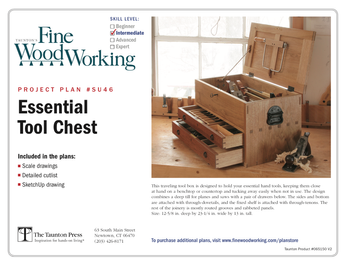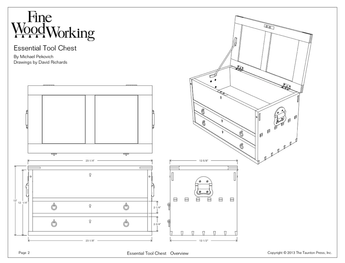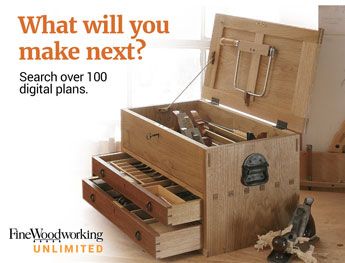Discussion Forum
Get It All!
UNLIMITED Membership is like taking a master class in woodworking for less than $10 a month.
Start Your Free TrialDiscussion Forum
Digital Plans Library
Member exclusive! – Plans for everyone – from beginners to experts – right at your fingertips.
Highlights
-
Shape Your Skills
when you sign up for our emails
This site is protected by reCAPTCHA and the Google Privacy Policy and Terms of Service apply. -
 Shop Talk Live Podcast
Shop Talk Live Podcast -
 Our favorite articles and videos
Our favorite articles and videos -
E-Learning Courses from Fine Woodworking
-
-
 Fine Woodworking New England Event
Fine Woodworking New England Event












Replies
He doesn't explain much. But, trust me bro.
In all fairness too many holes in the same vicinity too close together drilled at a rate that is too fast one could start a fire.
However this feel like clickbait. It almost feels like they could have experimented to achive this on purpose. More! Deeper cut, slower feed rate, closer together! If the bit never raises high enough to eject chips it's rubbing wood against wood. Like the guy on Insta that purposly injured himself to convince his wife he needed a sawstop.
Yeah, lighter passes, proper feed rate. Let the chips eject. I've "smoked" bits without a cnc by being too agressive.
The key here is the down shear bit aspect. You are shoving the chips down into the hole and compressing them, with them getting hotter and hotter as the bit spins against them. Feed rate wouldn't change that. Slower router rpms would slow the process, but not prevent it. Down shear bits should only be used where there is some place for the chips to exit.
I think your answer is spot on.
So, it has nothing to do with bit diameter mentioned in the quote?
Actually, it might. If you have a large bit diameter, the flutes are larger, and it is more possible for chips to go upward against the downward thrust of the router cutting edge. With 1/8" bit, there is almost no room for chips to go upward. I still don't think downward shear bits in closed situations are a good idea, but they are less bad in larger diameters.
“[Deleted]”
Right. CNC is not plug-and-play like they make it out to be when trying to get you to buy. Bit geometry, feed rate, spoil volume removal. dust collection. blah, blah, blah. Just as with the use of any tool, proper technique yields good results.